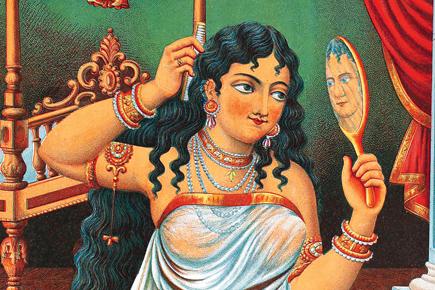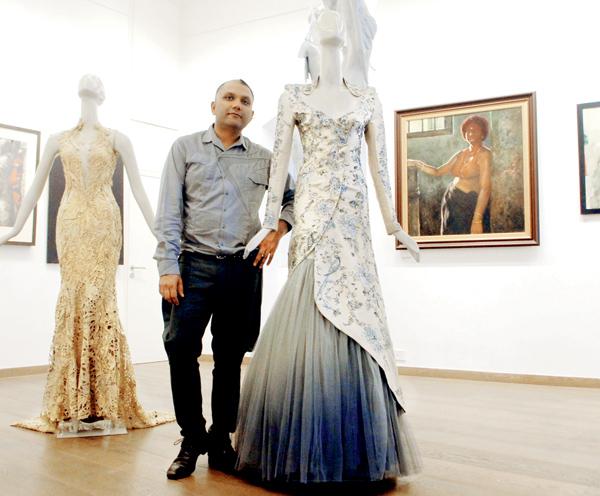Delhi Art Gallery has partnered with designer Gaurav Gupta to create an exhibition that explores the role of fashion in modern Indian art while the spotlight is shared with Gupta’s defining fashion moments over a decade

A 19th century chromolithograph will be a part of Paradigm Shift
A lot seems to be happening in the world of fashion designer Gaurav Gupta. Earlier this month, he opened a store in the city that coincided with his brand completing a decade. And from today, one can visit a collaborative art exhibition between the Delhi Art Gallery and the Delhi-based designer.
ADVERTISEMENT

A 19th century chromolithograph will be a part of Paradigm Shift
Titled Paradigm Shift, the exhibition looks at the designer’s journey through the lens art and culture while also exploring the role fashion has occupied in modern Indian art by canvassing artists such as SL Haldankar, and Pestonji Bomanji.
My fashion diary
Gupta speaks of his growth, “A decade is but a frame to vaguely define my journey. Fashion became my medium for a philosophy of relentless questioning, of flight.”

Fashion designer Gaurav Gupta at the gallery Pic/Shadab Khan
Kishore Singh, co-creator of the exhibition, shares that Gupta’s works have always had multiple sources of influence, since he was at college; for instance, when Gupta created Ether’s Lyre, his award-winning graduating collection at Central Saint Martins College of Art and Design, UK, he was inspired by the paintings of gods and goddesses in Indian mythology depicted in art.
While analysing the designer’s oeuvre, Singh was led on to the presence of fashion in modern Indian art.
Of gods and wardrobes
Using artworks by modern Indian artists from the gallery’s collection, Singh created a narrative that discusses how the depiction of clothes in artworks helps perceive the society’s framework of caste, religion, communities, folk legends and gender.
“When one looks at the works of modern Indian artists, the migration from miniatures and other styles, was rather glamorous. And the fashions portrayed through art affect people’s perception. The Bharat Mata painting of Abanindranath Tagore was a symbol for freedom fighters throughout the struggle. Century-old paintings by Raja Ravi Varma, still define how our gods and goddesses are dressed up,” says Singh.
Singh feels that fashion is an echo call of this identity served by art. With the exhibition, he has tried to position a decade of Gupta’s works against Indian artworks, thus examining the relation between fashion and art.
 Subscribe today by clicking the link and stay updated with the latest news!" Click here!
Subscribe today by clicking the link and stay updated with the latest news!" Click here!






